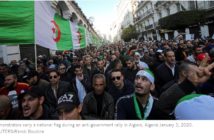World Affairs Journal
Ongoing turmoil in North Africa and the Middle East has disappointed many in the West who had expected the 2011 revolutions to usher in a new era of social justice and democratic transformation across the region. There is now no lack of dour meteorological puns on “Arab Spring” to indicate the unfortunate change of season since the uprisings. But the people who rushed to use this term in the first place set themselves up for disappointment. It was rash and ahistorical to presume automatically that after December 2010, the Arab world would go through democratic transitions akin to those which East European countries went through after the fall of the Berlin Wall. Despite certain vague and beguiling similarities, transition processes in the Arab countries have really had little in common with those in post-Communist Europe.
Picking their way through the wreckage of Communism, the leaders of the 1989 European revolutions were able to tap into their own deep-rooted democratic traditions. The post–Arab Spring political classes had no such foundation, and were faced instead with a dreary and forbidding legacy of autocratic rule. Even as the forces of radical change were gathering in the Arab world, the disenfranchised political elites continued to knock haplessly at the doors of political participation, while the regimes in place—with no real vision for the future—desperately sought to maintain the status quo. Robert Kaplan was correct when he recently wrote, “In post-Communist Central and Eastern Europe the transition was quicker, but that was because those countries had a background of democratic practices and bourgeois culture prior to World War II, to a degree that many Arab states simply do not.”
In addition to having had experiences with democracy, populations behind the Iron Curtain had been close enough geographically to free societies to have seen the way of life their neighbors to the West enjoyed. As the dividing lines began to crumble, membership in an enlarged European community and in transatlantic institutions such as NATO were incentives to bring them all the way down. “Building Europe whole and free” became what Pavol Demes of the US German Marshall Fund calls “an unprecedented mega-project attractive both for the populations and leaders of the democratic West and for those in post-communist Europe.”
In the Arab world, the revolutions of nearly three years ago occurred against an intellectually arid background made worse by dire socioeconomic crises. By the end of the last decade, for instance, youth unemployment in North Africa, especially among university graduates, was the highest of any region in the world. Poverty was at double-digit levels. Worse still, there were serious development imbalances within the countries of the Arab Spring, and the old regimes at least partly brought the uprisings upon themselves by promoting a narrative of upward mobility they couldn’t deliver on. Rulers such as Hosni Mubarak of Egypt and Zine el-Abidine Ben Ali of Tunisia tried to ward off youth despair by promoting an ideal of “equal opportunity” which they themselves discredited by tolerating corruption and nepotism around them. Unfettered access to universities created a huge “graduate proletariat” and few value-added job opportunities. Diplomas opened the gates to nowhere for young people who were eventually driven to rebellion by unmet expectations.
Once the old regimes fell, rebellious youth were all dressed up with nowhere to go. They had no thriving nearby region to which they could travel, as young Polish workers had in London and Paris. There was no Arab West Germany willing to take an existentialist gamble on saving a poorer neighbor. Not only were there no Marshall Plans; there was nothing remotely resembling the massive assistance provided by Western Europe and the United States to Central and Eastern Europe after 1989. Instead, there were civil wars, NATO bombings, continuous upheaval and underdevelopment in the immediate vicinity of each of the Arab Spring countries. The only post-2011 “mobilization” undertaken by the West in the region was aimed at countering the jihadist encroachment in Mali, a problem caused in the first place by the lack of an adequate Western exit strategy from Libya.
After the mass protests induced the departure of one ancien régime after another, the socioeconomics did not change that much. The wretched, the unemployed, and the poor remained wretched, unemployed, and poor. The situation could not improve without better security, greater stability, and more seasoned management. As the pace of development and job creation stagnated, the time bomb of youth discontent went on ticking, as it still does. Although the already-shaken state institutions had to handle ever-accumulating problems and challenges, revolutionary zeal deprived inexperienced governments of the contribution of senior cadres who could have helped weather the storm of radical change. The exclusion of officials who had served in positions of leadership under the previous regimes constituted a major handicap for the new rulers as they scrambled to deliver results well beyond their reach.
Full text of this article is available by subscription only.
Oussama Romdhani is a former member of the Tunisian government. He served as a Tunisian diplomat to the United States from 1981 to 1995 and is currently an international media analyst.






